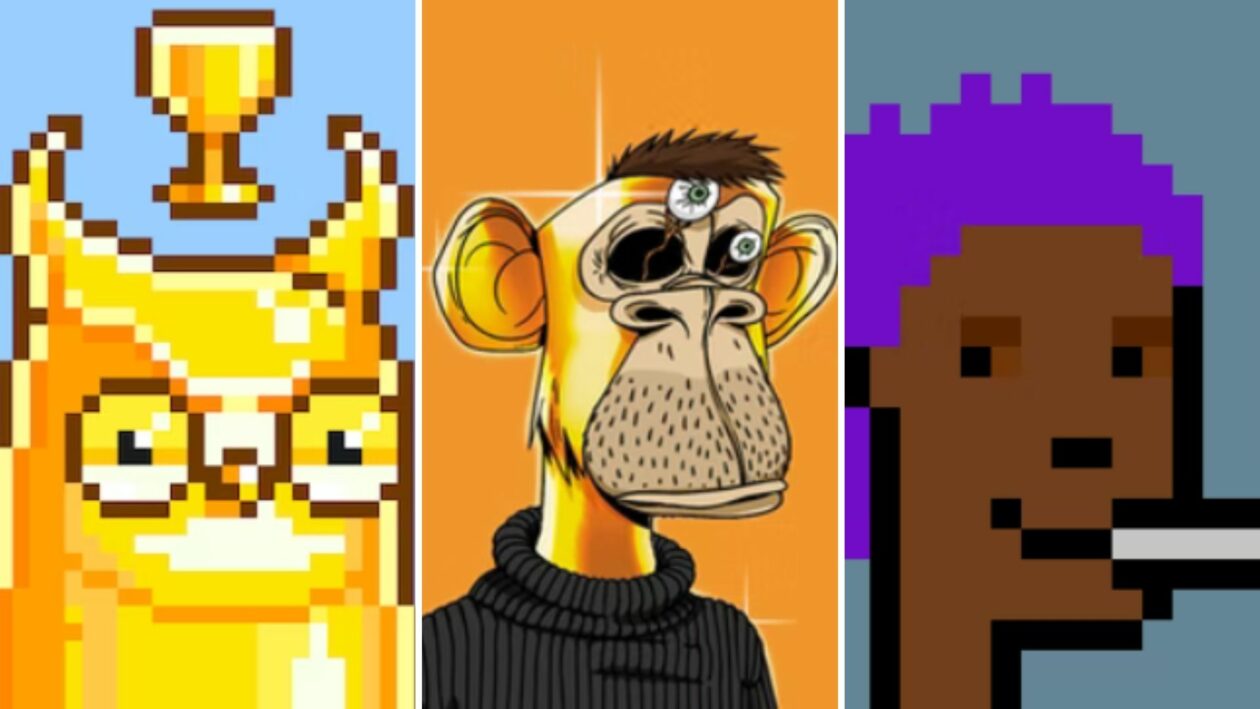The global non-fungible token (NFT) market capitalization has dropped by 37.7% from its record high reached last year, but the Forkast NFT 500 Index suggests there is more to this market than the standard supply and demand dynamics behind rising and falling prices.
According to data tracked by analytics firm NFTGO, the NFT market peaked at US$36 billion in April 2022, US$14 billion more than today’s US$22 billion.
Over the same period, the Forkast 500 NFT Index, a newly launched performance measure of the global NFT market based on 500 smart contracts, plunged 84.71%.
The Forkast 500’s nosedive implies that if traders diversified their NFT portfolio and invested in the top 500 projects in the industry, they would be “rekt” – a crypto industry euphemism to describe heavy losses. According to Yehudah Petscher, a strategist at Forkast.News data partner CryptoSlam, NFT investors have adopted a casino-like trading behavior where they need to constantly move their funds to the “next hot project” to be successful.
“Liquidity gets recycled by savvy traders who frequently sell their NFTs, and use the funds to buy into new projects. From there, that same trader is looking to exit quickly and continue the cycle over and over again,” Petscher told Forkast.
House rules
Colin Johnson, chief executive of blockchain-based fine art investment platform Freeport, says that not all NFT traders may have been “rekt” as much as the Forkast 500 indicates.
“A well-diversified NFT trader will generally have another bag to work from. If they went all in on, say Moonbirds last May, they’re likely reeling and wanting some time away from crypto,” said Johnson.
Moonbirds, an Ethereum-based NFT collection that rewards investors for holding the assets longer, had a record-high floor price, or the lowest sale price of an NFT in a collection, of 25.5 ETH (US$39,142) on April 25, 2022, or a little over a week after its launch. It has since lost more than three quarters of its all-time high floor price and is currently priced at 5.6 ETH. The floor price represents the lowest price of an NFT within a collection.
“The NFT casino benefits just the select few top traders who understand how the casino works. It absolutely wrecks newcomers who think NFTs are long-term investments as opposed to collectibles,” Petscher said.
While the casino rewards those that understand the rules of play, CryptoSlam’s data suggests that new buyers may be entering the game.
In February, the number of unique monthly buyers jumped to some 1 million addresses from 593,000 in January. February’s monthly customers tally was almost double that of the 529,000 sellers. On Feb. 26, daily unique NFT buyers rose to an all-time high of 166,000, following U.S.-based cryptocurrency exchange Coinbase’s free NFT airdrop.
“There is still large-scale activity from the top 1% of traders — recently to collect airdrops from new platforms like Blur,” Johnson said. “Most NFT collectors who are outside of that top 1% are very likely deep in the red.”
See related article: Bitcoin Punks exceed 1,145 ETH in daily trading volume as Bitcoin Ordinals gain traction
Blue chip cash
Much like cryptocurrencies, the high volatility of NFT prices poses challenges to estimating investors’ losses over a certain period of time.
“Holding a blue-chip NFT generally assures the owner that the NFT holds some inherent value,” Anndy Lian, author of the book “NFT: From Zero to Hero,” told Forkast.
Bored Ape Yacht Club, the second-largest NFT collection by historic sales volume after play-to-earn game Axie Infinity, had a floor price of 63 ETH (US$96,705) on Thursday, a 27% drop from 90 ETH on April 2 last year, when the NFT market cap was at its highest.
CryptoPunks, which is the third-largest collection, fell 52% to 5 ETH over the same period, while
Mutant Ape Yacht Club, the fourth-largest, fell 14% to 14.4 ETH.
“The top collections are primarily controlled by a small number of large-scale collectors. Average collectors’ wallets are in much worse shape this year than last,” added Johnson.
Petscher elaborated in the March 3 issue of CryptoSlam’s newsletter.
“Without innovation and new advancements in Web3 tech, we’ll see the current NFT casino continue, where traders cycle into the new hot projects, extract liquidity and put it right back into the slot machine of the next hot NFT project. Let’s just not call that type of action in NFTs ‘growth,’” wrote Petscher.
So how much in losses did a general NFT trader make as the digital assets markets tumbled from all-time highs?
“As a trader myself, I can tell you it’s much closer to 84%,” said Petscher.
See related article: The Future of NFTs





